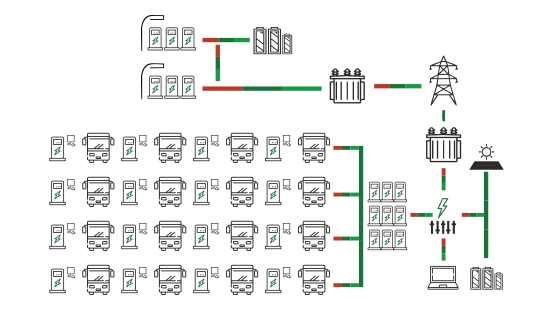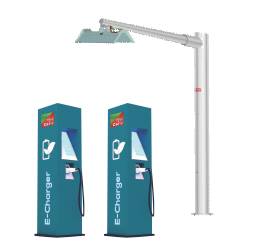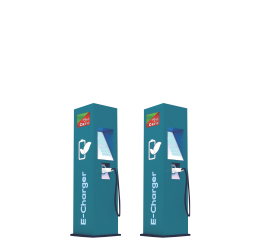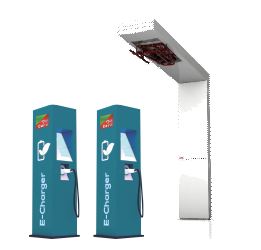EV Charging Infrastructure



E-Bus Charging
3 main ways of charging buses
In the System architecture roadmap:
(for Understanding the electric bus industry phases)
Transition Phase: Present Scenario In India
Technology adoption:
- Established fleet transition plans
- Mixed fuel vehicles fleets
- eBusesfully part of revenue service
Industry & technology standardization:
- Defined & commonly implemented
- Technology reliability is expected
e-Buscharging infrastructure:
- Standardized & interoperable
- Adaptable and scalable architecture
- Smart charging required as e-Fleetgrows
Full-scale electrification phase: Upcoming possibility
Technology adoption:
- Vast majority of fleet procurement programs include e-Buses
Industry & technology standardization:
- Technology improvement continues with lessons learned from the field
e-Buscharging infrastructure:
- Optimized energy and asset usage
- Grid-integrated
- Energy Management System
- Contingency plan & on-site generation
Understanding Transition phase
Evolutive and adaptable
Key charging infrastructure concepts:
- Scalable
- Smart chargingsolution
- Modular power architecture
- Standardizedto ensure compatibility with multiple vehicle OEMs
- Remote monitoring & control
- Fleet & power management
- Often brown field projects
- Modularphysical architecture
- Major civil & electrical works -> initial phase
Understanding Full-scale electrification phase
Comprehensive and grid-integrated:
Key charging infrastructure concepts:
- Optimized asset utilization
- Smart charging solution
- Cab Services/Fleet Management System (FMS)
- Integrated grid solutions
- Energy Management System (EMS)
- Energy Storage & On-site generation
- V2X for specific use-cases
- Fully integratedinto your operations
- Digitized operations + electrified depot
- Often green field projects
First part in timeline of Transition Phase
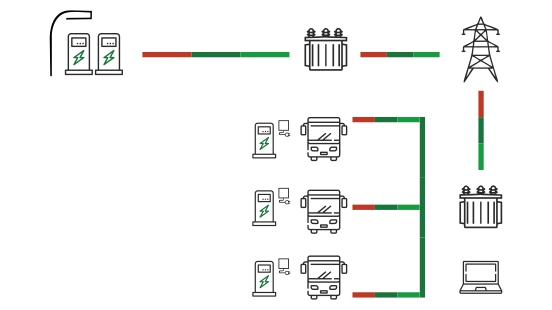
Middle part in timeline of Transition Phase
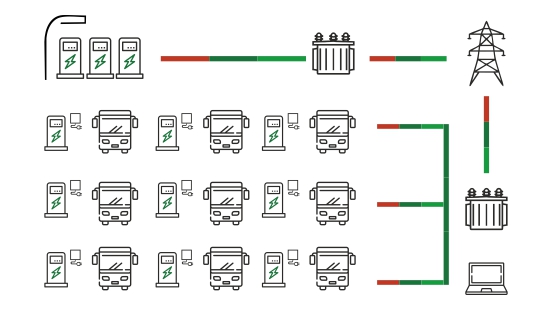
Last part in timeline of Transition Phase
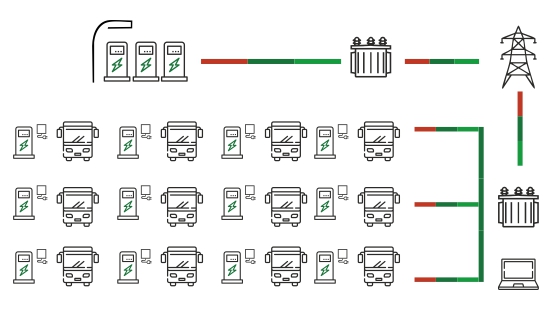
Turn lessons learned from previous phases into a comprehensive solution
